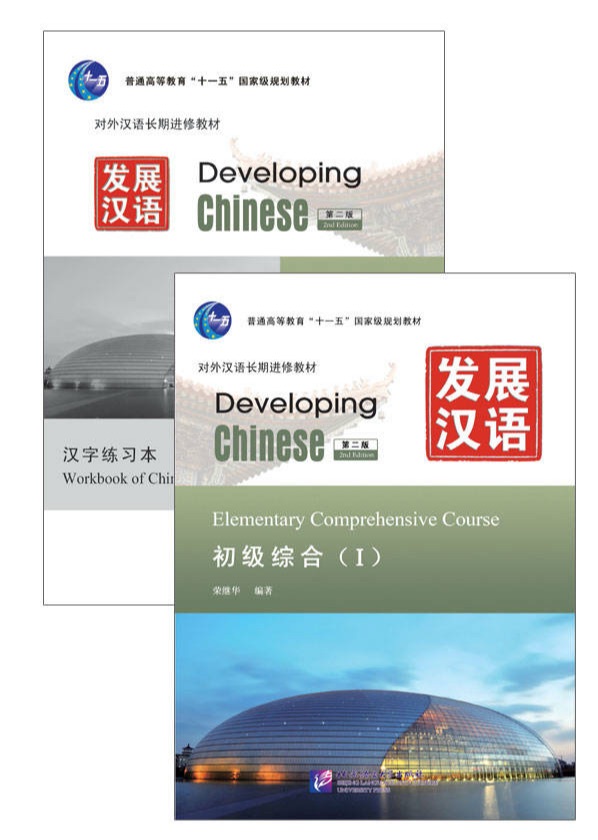| 《发展汉语》(第二版)为普通高等教育“十一五”国家级规划教材,在继承原版《发展汉语》良好架构的基础上,与时俱进,共28册34本。本套教材采取“综合语言能力培养与专项语言技能训练相结合”的外语教学及教材编写模式,分为“三个层级、五个系列”,即纵向分为初、中、高三个层次,横向分为综合、听、说、读、写五个系列。其中,综合系列为主干教材,口语、听力、阅读、写作系列为配套教材。本套教材的总体目标是全面发展和提高学习者的汉语语言能力、汉语交际能力、汉语综合运用能力和汉语学习兴趣、汉语学习能力。整套教材在语体和语域的多样性、语言要素和语言知识及语言技能训练的系统性和针对性,在反映当代中国丰富多彩的社会生活,展现中国文化的多元与包容等方面,都作出了新的努力和尝试。本册为初级综合(I),全书共30课,适合零起点或能进行最简单而有限交际的汉语初学者使用。学完本册教材,学习者能够掌握最基本的汉语语音知识和发音技能、初级阶段常用词汇、汉语的基本句型;掌握汉字的基本笔画、笔顺和汉字的基本结构,能够书写所学汉字;具备初步的汉语交际能力,能用汉语解决日常生活和汉语学习中的简单问题;具备简单的学习策略、交际策略,初步了解与汉语交际相关的中国文化知识,具有初步的跨文化意识。 随书赠送录音MP3一张,录有每课的语音练习、生词、课文等内容。另附配套《汉字练习本》,供学生学写汉字使用。Developing Chinese (2nd Edition) is a set of nationally planned textbook for higher education during the "Eleventh Five-Year". Based on the well-designed structure of the first edition, this edition adds more elements in tune with the times. It includes 28 volumes with altogether 34 books. Combining the cultivation of integrated language skills with the training of specific language skills in its compilation, this set of textbooks can be divides into three levels (elementary, intermediate and advanced) and five series (comprehensive, listening, speaking, reading and writing), among which the comprehensive series is the bulk and the others are the accompanying series. The overall purpose is to develop and improve the students' Chinese language skills, Chinese communication skills, integrated Chinese capabilities as well as enhance their interest and ability in learning Chinese. The whole set has made some new attempts to diversify the language styles and registers, to systemize and specialize language elements, language knowledge and the training of language skills, to reveal the rich and varied social life in modern China and to show the diverse and tolerant Chinese culture.The Elementary Comprehensive Course (I), with altogether 30 lessons, is suitable for total beginners or beginners who can communicate in the simplest Chinese. After finishing this volume, learners can master: | (1) the most essential Chinese phonetic knowledge and pronunciation skills; (2) common Chinese words at the elementary stage; (3) basic patterns of Chinese sentences; (4) basic stokes, stroke order and structures of Chinese characters as well as the ability to write the characters; (5) the ability to communicate in elementary Chinese and use Chinese to solve simple problems in their study and daily life; (6) the basic learning and communication strategies; (7) a preliminary knowledge of the Chinese culture related to communication and a fundamental cross-cultural awareness. A CD of MP3 file is attached to the textbook, with the phonetic exercises, new words and texts, etc., in each lesson recorded in it. An accompanying Workbook of Chinese Characters is provided for the students to practice writing Chinese characters. |








